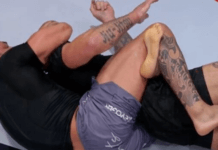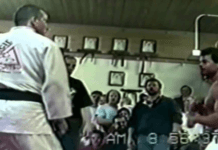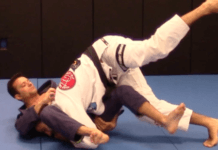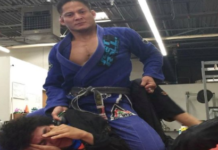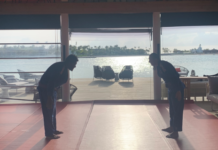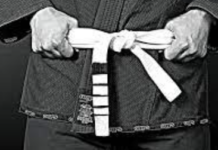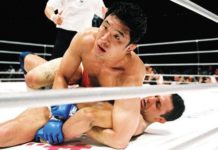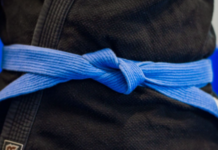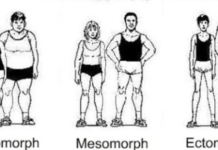Some people reject certain sports because they think they don’t have this “special something” to train them. E.g. they don’t start CrossFit because they aren’t in a good shape or yoga because they think they aren’t flexible enough. The same may be the case with jiu jitsu, just a bit later. People start training BJJ, even like it and then they see someone with a higher belt fighting with the inverted guard or twisting in weird directions. Then they start to think that they are not stretched enough to do it so maybe this sport is not for them. And that’s why it’s worth taking a moment to understand the relation between flexibility and BJJ.
Do you need to be flexible for BJJ?
When many people think of flexibility in martial arts they imagine scenes like the ones in the movies. In their heads they see Jean Claude van Damme doing splits on trucks. Of course, it is impressive, it would be nice to be able to do that. However, this is not what you need to continue training Brazilian Jiu-Jitsu. On the other hand, you do require a certain level of flexibility for jiu-jitsu. So the answer to the question do you need to be flexible for jiu-jitsu is not clear cut. At the same time is yes and no, depends on your understanding of flexibility. More about it below.
What is flexibility?
Before we move on to the relation of BJJ with flexibility, it is worth understanding what it really is and erasing unrealistic ideas about it from our heads. So for starters, something like a definition and basis of this concept. Flexibility applies to the range of movement in a joint or series of them, and length in muscles that cross the joints to produce a bending movement or motion. Every person is born with a particular range of motion for each joint in the body. It just means that some people will find it easy to touch the floor with their open hands without exercise, while others will have to work on it.
The good news is that flexibility can be improved by stretching. So nothing is lost, don’t worry, it’s something that can be trained to some extent. So as you can see, there is no info anywhere in the information about the flexibility that to be called stretched you have to be some kind of acrobat from the circus or artistic gymnast. It’s just a certain range of motion.
Flexibility and BJJ
As you can see flexibility is a broad concept. Of course, the majority of top BJJ competitors and higher belts will present themselves at a higher level of a stretch than the average person. However, there is no need to discourage yourself by this to successfully train BJJ, some basic flexibility is enough. What does basic mean here? Let’s say if you don’t stop somewhere on your thighs when you bend, there’s hope for you 😉 There is no need, however, to rest on laurels and be glad that, while standing with straight legs, we were able to touch the ground with the fingers. A better idea is to continue to work on our flexibility. Below you will find reasons why you should do it and how it will improve your BJJ.ㅤ
Reasons why flexibility is important in jiu-jitsu
There are several reasons why flexibility is important in BJJ. First of all, a full range of motion will allow you to perform the techniques properly. For example, flexibility will help you to swing your leg over your opponent’s head to complete the movement in the armbar from the guard. It also works the other way around.
Flexibility will not only help you perform the techniques but also allow you to defend yourself against them. A better range of motion will make you more difficult to submit. This is particularly important when it comes to submissions that involve the shoulder joint – like Americana or Kimura locks and the Omoplata. While sparring with different training partners who possess different levels of flexibility, you will immediately see how people with a more limited range of motion in the joint will tap much sooner.
Flexibility also provides greater resistance to joint injuries and it is probably the most important reason to be flexible for BJJ. By being flexible you will protect knees, elbows, shoulders, and neck against possible damages during training. A highly flexible joint is less prone to pressure. There is also a lower risk of rupture of tendons or ligaments. And a flexible muscle has that much more of an insurance policy against possible injury.
BJJ and flexibility go together really well also when it comes to guard retention. There is no doubt that having a greater range of motion in the hips and spine makes for better guard retention ability. For example, people who can put their knees in their armpits will be very difficult opponents to pass their guard. They can do a hook in from any position and replace their guard. If they can invert, you can be 90% past their guard only to have them quickly invert and put you back in guard before you know what happened.
In conclusion
You don’t have to be incredibly flexible to practice BJJ, but a particular level of it certainly comes in handy. Fortunately practicing jiu-jitsu will quite naturally develop your flexibility through performing the various movements. It is because training Brazilian Jiu Jitsu over some time will require you to use joints through their full range of motion. Moreover, most BJJ classes involve some stretching which will also improve your basic flexibility. You can also stretch at home to make your range of movement better.


